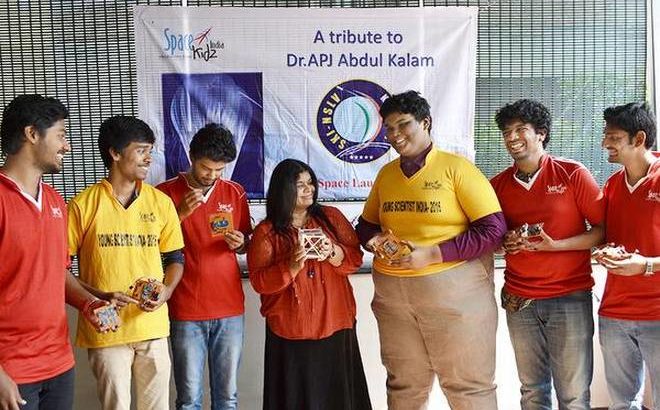Asia/India/Agosto del 2017/Noticias/http://www.thehindu.com/
The world’s lightest satellite, designed by an Indian student, has been launched by NASA.
When talent, dream and team work come together, age is just a number. With his invention, Mohammed Rifath Sharook has proved that today.
A lead scientist in Space Kidz India, Sharook, an 18-year-old student from Pallapatti in Karur district, Tamil Nadu, has created the world’s smallest, lightest and low-cost nano satellite along with his team. The satellite was launched by NASA’s Langley research centre, Virginia, on June 22, this year. Sharook explains his invention, “It was a sub-orbital flight — a space flight that doesn’t complete the orbit of the earth but goes to space and lands in a parabolic trajectory.”
Inspiration
Sharook developed an interest in space science while he was studying in Class VIII because of his father who was a space research scientist. “We would always talk about space and the universe when I was a child. I used to tell him that I will design a satellite one day,” said Sharook. This passion for space research has made him one of the leading scientists in a Chennai-based space organisation called Space Kidz India (SKI).
After his father’s death in 2008, he garnered support to realise his dream. “My greatest supporters are my mother, uncle and Dr. Srimathy Kesavan, CEO of SKI, who constantly supported me,” he adds
Sharook participated in a space challenge contest, ‘Cubes of Space’, for young inventors. This challenge was organised by an education company called ‘I doodle Learning’. He led the project and created the satellite along with his team Vinay Bharadwaj, Tanishq Dwivedi, Yagna Sai, Abdul Khasif and Gobinath. He named it as KalamSat to demonstrate his admiration for renowned space scientist, Dr. A.P.J. Abdul Kalam.
The satellite can be used as a radio reflector and as backup communication during disaster. It is made of reinforced 3D-printed carbon fibre polymer. “This carbon fibre is used to reduce the size of the satellite and make the launch more cost-effective,” says Sharook. “We created the satellite from scratch. We did a lot of research on different cube satellites from all over the world and found that ours was the lightest,” he added. How hard was it for them? “Well, the biggest struggle we had was to fit all the things in a 3.8 cm cube as the weight of the satellite could not be more than 64 grams.”
“Creating a private space research agency such as Space X India is our next aim,” says Sharook.
Fuente: http://www.thehindu.com/education/reach-for-the-stars/article19479862.ece
Imagen: https://lh3.googleusercontent.com/EQUGWiwkXsAM5b6M6AIfQmxMN6sw9vp5E8r32McHiO2WMMXUAGiFBh6s18l8PzaVl5lvAg=s85







 Users Today : 16
Users Today : 16 Total Users : 35460473
Total Users : 35460473 Views Today : 32
Views Today : 32 Total views : 3419327
Total views : 3419327